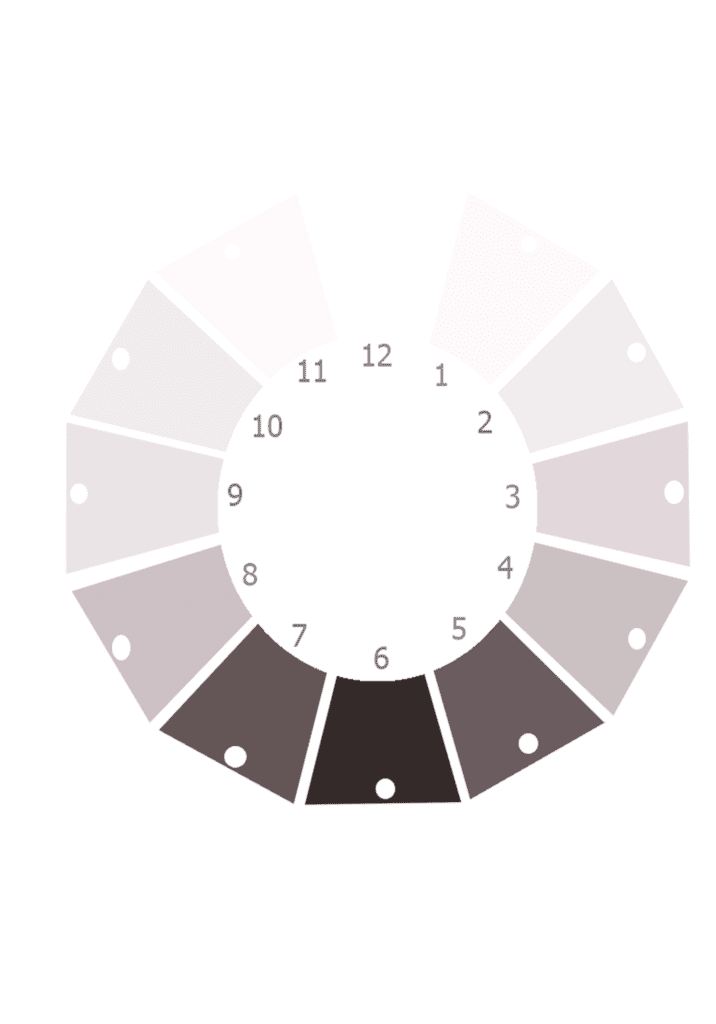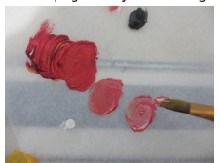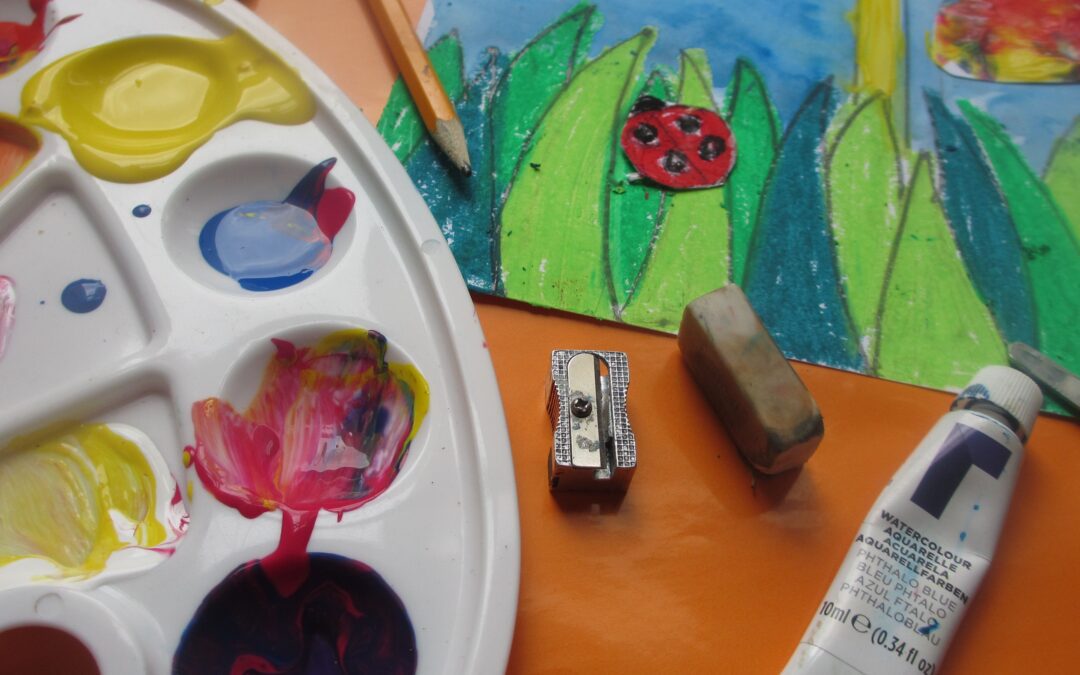Stage two of mixing a color: Determining the value.
In our last post, we discussed the first part of mixing colors and went through what pigments you need to mix any color. We narrowed it down to nine pigments that we can use to create any hue and can use these pigments to mix hues on our color wheel.
In this post, we are going to go through the second part of mixing a hue and that is determining its value.
In simple terms, that means determining how light or dark a color is. The colors all around us, have different values and when mixing a hue, we need to know what value level it is.
The reason why this is so important is that you don’t want your artwork to have all the same value hues. You need contrast and one way to do this is by using colors of different values. Often when teaching, I tell students to make sure they have the darkest parts and lightest parts more evident and it really brings out the painting.
The way to determine the value of a hue is to use this value wheel or squint your eyes and you will see the lightest and darkest values easily. Determining the value of a hue is the hardest part of mixing a color as it’s a tricky skill to master. If everything was in black and white it would be easier to determine. But often you are looking at a color that isn’t black and white and you have to determine its value.

Plus some pigments are naturally a darker value, like blue and red are a darker value than yellow, which makes it even more tricky to determine.
Mixing the right value hue:
So once you’ve determined that the hue you are trying to mix is a lighter value, the natural default would be to just pick up some white and lighten a color. But doing so will make your colors flat.
Also, using black to darken colors will create flat colors.
So what’s one to do?
First of all, calm down. I’m not going to leave you hanging!
Here are the simple steps you need to know:
- Either use a lighter or darker value hue. For instance to make a lighter green, add yellow. To make a darker purple, add blue.
- If you need to use white, add another color that’s already into it to make the color ‘alive’ again. For instance, adding white to orange will flatten the color. But if you add yellow back in after adding the white, it will make the color alive again. I find when mixing pink, adding a touch of yellow makes the color less flat.
- Use Paynes Gray instead of black to darken colors. Paynes Grey is much richer and nicer than using black and won’t flatten the colors.
I find that this knowledge of making sure you’re hues aren’t flat can really separate your artwork from being on a basic level to taking it to the next level. Your paintings will go from lifeless and flat, to alive and vibrant.
So to summarise, determining the value of a hue is crucial when mixing, but be careful when adding white or black as they flatten a hue. You want to add another color back in when you are mixing a pigment with white, usually, a pigment that is already in the mixture.

This image above is with just Alizarin Crimson and Titanium White

This image above is with Alizarin Crimson, Titanium white and Cadmium yellow pale added in to make it more alive.
The only instance when I find you can add straight white without needing to add another color is blue for skies. There adding just blue and white works fine.
As well, you do not want to paint using a lot of white at the beginning of a painting. I like to add the lightest values that need white towards the end of the painting or leave space in the painting for the light value hue to be added. This is because adding white to your painting too early can cause the other colors to blend in and you end up with all the colors becoming flat and the white taking over the painting.
Use white wisely when painting and don’t jump to add it everywhere. Often I tell a student to wash their brush and paint a section again, as I can tell they have white on their brush and it’s subtly deading their hues.
So make sure to keep your paintings alive and vibrant and use your white wisely and if this totally confuses you, here’s simpler advice: Next time you want to just use white to lighten a color, first see if you can add a lighter value hue or just begin to notice what happens when you add white to a color. Slowly, you will get used to using the other pigments to create lighter or darker value colors and when you add white or black you will make sure the hue is still ‘alive’ and not flat.
It’s a mindset shift and a process to learn, but a very important part of building up your skills as an artist.
So just remember- WWW? (What’s with the White?) next time you paint.
In my teacher’s training course, I go through ‘Palette rules’ that teachers can teach their students to set them up to mix colors correctly. Watch our free masterclass to know how to teach any student of any age art:
In my kid’s art courses, we focus very heavily on mixing colors without white so that students get used to mixing without jumping to the white. Join the waitlist to know when we open our doors to our signature art courses for kids and teens.
Want to learn how to paint and draw yourself? Join the waitlist to know when our beginner’s course launches.

